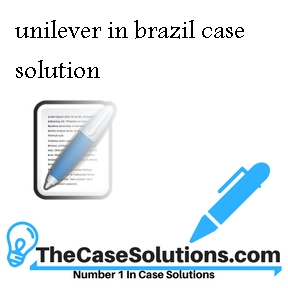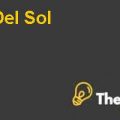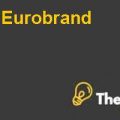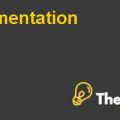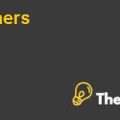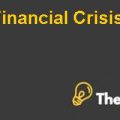Problem Statement:
The management of the company wants to analyze and decide about whether the firm should change their marketing strategies of detergent brands to consumers categorized as low income or not. As of now, the company has already acquired 81% of the share in the business of the detergent industry. Nevertheless, many competitors believed that Unilever, being a multinational company should not enter into the low income market as there are so many small scale companies and local entrepreneurs who survive by covering this segment of the market.
If the company decided to enter in the low income market then there is a need to evaluate certain questions related to marketing, branding and positioning of the product. To answer this, the management of the company needs to examine its current marketing and branding strategy. Along with that, ideal brand positioning and marketing mix should be recognized for consumers in low income segment.
After the extensive and detailed study done by the management of the organization, the company recognized that people in Northeastern Region of Brazil would love to buy OMO, which is Unilever's Flagship brand but with their low income levels, they failed to afford the brand.
Market Analysis:
Unilever in Brazil:
The history of Unilever in Brazil is long and old. The company has been successful in terms of profitability in the country. After establishing its business in Brazil, in 1929, the firm launched its first sunlight soap. Later on in the year 1957, the first detergent in the country of Brazil had been launched which led Unilever to the height of success. After the launch of the first detergent, the company acquired 52% of the share in the business. With a combination of other two brands of Unilever Minerva and Campeiro, the total market share of the company becomes 81%.
By analyzing and evaluating the potential growth in the Brazilian market, Robert Davidson was looking to explore growth opportunities in the marketing of detergents to low income consumers who lived in the northeastern region of Brazil. One of the Unilever's brands Campeiro is segmented like an affordable prices detergent but still out of reach from low income consumers of Northeast containing only 6% in the market share. In addition to that, the company is facing a threat from its major competitors especially Proctor and Gamble which is planning to launch detergents in the low income segment, as well.
Brazil:
Brazil is a country situated in South American that covers almost half of the area bordering the Atlantic Ocean. The county further divides into two segments that are north and south area. As far as the detergent and soaps markets are concerned, they are far different from each other as washing of clothes is different in both regions. The reason behind this variation is the education level of consumers. Individuals in north-eastern region are not literate as compared to individuals in the southern area. Cultural difference is another factor which differentiates consumers in two regions.
Consumer behavior in Low Income North-eastern Brazil:
Before entering in the market, it is important to understand the consumer behavior to better implement marketing strategies. Marketing to low income consumers is an important task but is often over-looked by companies. Consumers in the North-eastern region have completely different view point then consumers in the southeastern region. First of all, low income consumers wash their clothes more frequently than the south-eastern consumers because they have fewer clothes than high income people. This is an opportunity for Unilever to target consumers who consume a considerable amount of detergent five times a week.
Other than that, women in the north-eastern region enjoy washing clothes as it is the only source for them of being social. On the other hand, women in the south-eastern region view washing clothes as a daily responsibility.
Competitors:
At the time of the case, P&G had quite recently begun the acquisition of local brands and moved them to its global brands. In spite of the fact that P&G Brazil is a moderately new and relatively small contender, its access to P&G's R&D and marketing knowledge makes it an imposing one. The overwhelming position of Unilever in the SE improves the probability hence, P&G will surprise attack in the NE region.
Local contenders are less challenging because of several reasons. They don't have capabilities and resources to contend with Unilever regarding marketing expenditure. They have a tendency to be preservationist, conveying mediocre quality items at low costs. Then again, the Nirma encounter in India indicates that even local contenders with few resources can turn into a true threat once they take advantage of their cost structure and client knowledge
Customers:
The key point here is that the low income segment is extensive and large. Then again, one of the reasons why less multinational organizations target customers with low income is that managers handling marketing activities simply don't have the foggiest idea about this segment of consumers. Moreover, advertising managers frequently don't even attempt to comprehend this segment. Yet it is vital to understand product attributes along with end benefits that are vital for low-salary purchasers when purchasing detergents.
Product attributes:
The basic purpose of the low-income consumers is the requirement of detergents that just clean-up clothes i.e. making clothes white and stain free. Another attribute which attracts the LI consumers are the quantity of foam produce from the detergent. While consumers in the Southeastern region prefer less detergent which remove stains because they use bleach to accomplish this task.
End benefits:
Regularly, Low-Income customers think more about expense than higher-income consumers. They are extremely well-informed about costs and make little impulse buying. Obligations in budget keep them from stock-piling or purchasing in extensive amounts, regardless of the possibility that this might mean an easier unit cost. Price shoppers believe that all brands are the same and that price is the only thing that matters. Examples of this category are purchasers of private Labels (store brands) in Western Europe or the US. These shoppers could afford to purchase a more exorbitant brand yet pick the private Label, not because it is less expensive or more helpful, but since they accept that national brands don't include much value. Low-Income shoppers, then again, love national brands due to enthusiasms, functionality and emotional value that they add to the product.
North-East Market Attractiveness:
Unilever ought to focus on the low wage market in the NE of Brazil for some reasons. In Brazil, Unilever recently has a market share of 81% with their detergent portfolio, so they need to discover new routes for business development. There is additionally a passage risk by one of their primary rivals P&G which could take the first mover advantage and target consumers in low income before them. A fruitful business strategy for a low wage market in Brazil might be utilized as best practice to add profitable experiences for particular market requirements for other low pay markets as far and wide as possible. In addition to that, there are 48 million potential low income consumers in the North East of Brazil. The business is fundamentally gigantic. There are two methodologies which must be embraced, keeping in mind the end goal to achieve this business. First, re-structuring the value chain for a rural market should be done to achieve competitiveness and accessibility in the segment. In the meantime the organization needs to tailor the offer to unique needs of the business, create a particular marketing mix to create awareness and acceptability to capture value.......
This is just a sample partial case solution. Please place the order on the website to order your own originally done case solution.

